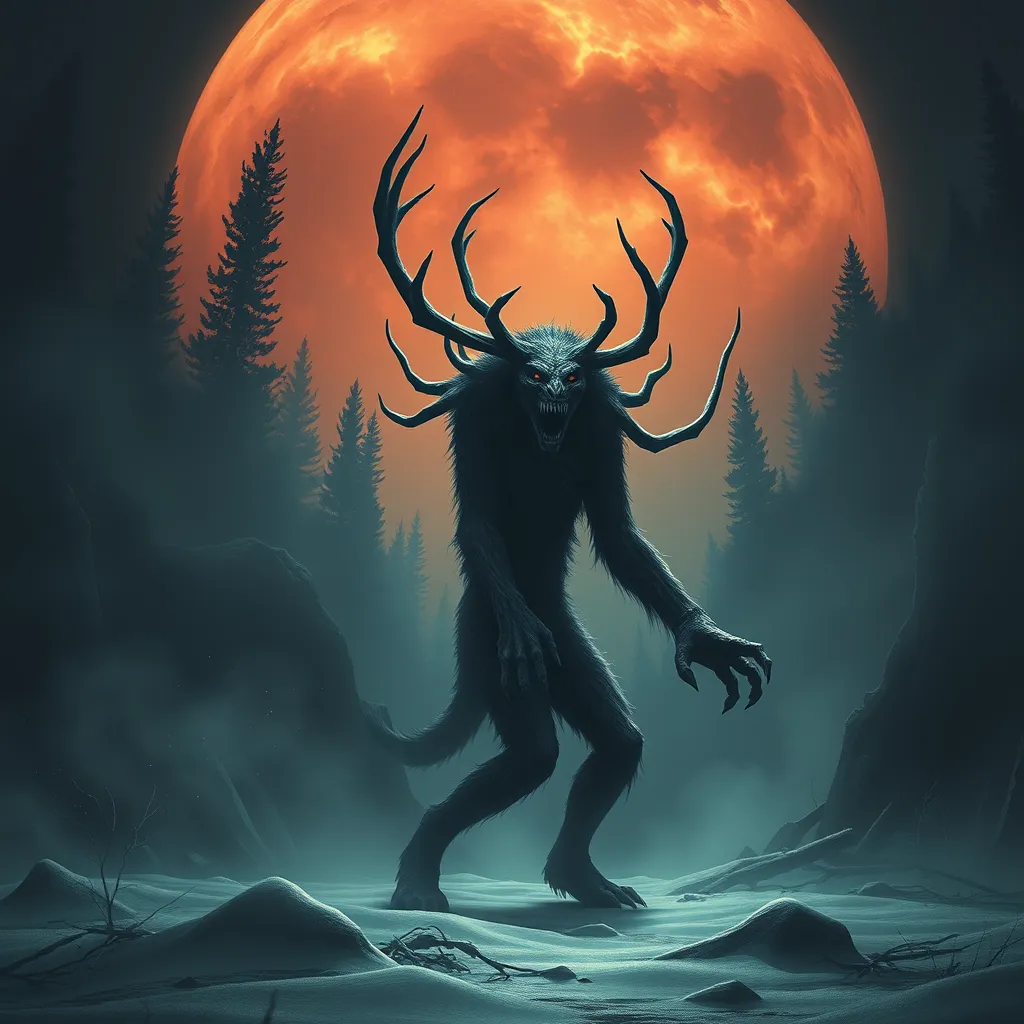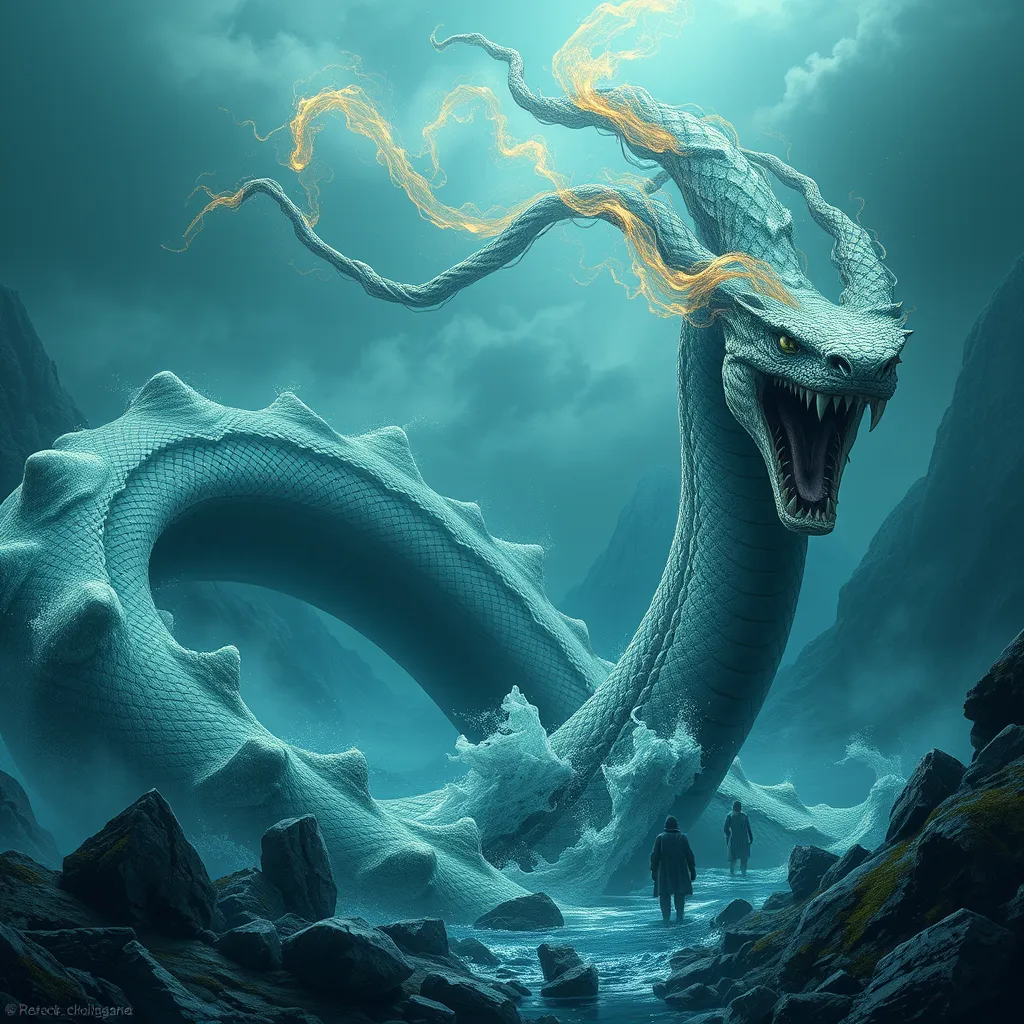Beyond the Cannibalistic Monster: Exploring the Wendigo’s Deeper Meanings
I. Introduction
The Wendigo is a legendary creature deeply rooted in the folklore of the Algonquian-speaking peoples of North America. Often depicted as a monstrous being with insatiable hunger, the Wendigo has become synonymous with cannibalism and the horrors of winter survival. However, the legend encompasses more than just tales of a flesh-eating monster; it serves as a reflection of human fears, cultural values, and societal issues.
Understanding cultural myths like the Wendigo is crucial, as they offer insights into the values, fears, and beliefs of the societies that create them. Myths hold a mirror to the human experience, revealing how communities interpret their environment and their existence within it. This article aims to delve into the deeper meanings behind the Wendigo myth, exploring its historical origins, symbolic representations, psychological interpretations, environmental themes, and cultural relevance in today’s world.
II. Historical Origins of the Wendigo
A. Indigenous roots in Algonquian folklore
The Wendigo legend has its roots in the oral traditions of the Algonquian-speaking tribes of North America, including the Ojibwe, Cree, and Innu. In these cultures, the Wendigo is often described as a spirit or a being that embodies the harshness of winter and the desperate hunger that can ensue during times of scarcity.
B. Early accounts and variations of the legend
Early accounts of the Wendigo vary significantly among tribes, but common elements include its emaciated body, an insatiable appetite, and a connection to cannibalism. Some stories describe the Wendigo as a once-human figure who succumbed to the curse of hunger, transforming into a monster. Other variations emphasize its role as a warning against the dangers of greed and selfishness.
C. Evolution of the Wendigo myth over time
As the Wendigo myth was shared and adapted, it evolved to reflect the changing fears and experiences of Indigenous and settler populations. The introduction of European influences and the traumatic experiences of colonization and displacement have also shaped the narrative, making the Wendigo a complex symbol of cultural resilience and adaptation.
III. The Wendigo as a Symbol of Greed and Excess
A. Connection to cannibalism and the consequences of hunger
The Wendigo’s association with cannibalism serves as a stark reminder of the dire consequences of extreme hunger and desperation. In times of famine, the legend warns against the lengths to which one might go to survive. The Wendigo embodies the idea that succumbing to these primal urges can lead to one’s moral degradation.
B. The Wendigo as a representation of unchecked desires
The concept of the Wendigo extends beyond physical hunger; it symbolizes the dangers of unchecked desires and greed. In many interpretations, the Wendigo represents a metaphor for the insatiable greed that can consume individuals and communities, leading to moral decay and social disruption.
C. Modern interpretations of greed in contemporary society
- The rise of consumerism and materialism
- The impact of social media and comparison culture
- Environmental degradation driven by overconsumption
In contemporary society, the Wendigo’s symbolism resonates strongly, reflecting the consequences of our collective greed and the societal pressures that compel individuals to pursue limitless desires, often at the expense of their well-being and that of the planet.
IV. Psychological Interpretations of the Wendigo
A. The Wendigo as a manifestation of fear and paranoia
From a psychological perspective, the Wendigo can be seen as a manifestation of fear and paranoia. The legend speaks to the anxiety surrounding isolation, survival, and the unknown. In harsh winter conditions, the fear of starvation can lead to a breakdown of social bonds and trust, making the Wendigo an embodiment of these psychological struggles.
B. Analysis of the psychological effects of isolation and survival
Isolation, especially in extreme conditions, can lead to significant psychological distress. The Wendigo myth illustrates how the environment can exacerbate fears and lead to paranoia. This aspect of the legend highlights the fragility of the human psyche when faced with survival challenges and the potential for individuals to turn against one another in dire circumstances.
C. The role of the Wendigo in understanding mental health issues
The Wendigo can serve as a metaphor for various mental health issues, including anxiety and depression. The feeling of being consumed by inner demons, akin to the Wendigo’s insatiable hunger, reflects the struggles many individuals face today. This interpretation encourages discussions about mental health, stigma, and the importance of community support.
V. Environmental Themes within the Wendigo Legend
A. The Wendigo as a cautionary tale about nature’s balance
The Wendigo legend also serves as a cautionary tale about the consequences of disrupting the natural balance. It reminds us of the importance of living in harmony with nature and respecting its limits. The Wendigo’s insatiable hunger can symbolize the destructive impact of overexploitation of resources.
B. Indigenous perspectives on land use and ecological sustainability
Indigenous cultures often hold deep connections to the land, viewing it as a living entity deserving of respect. The Wendigo myth embodies these values, emphasizing the importance of sustainable practices and the interconnectedness of all living things.
C. Relevance of the Wendigo in contemporary environmental discussions
- Climate change and its impacts on ecosystems
- Calls for sustainable development and conservation
- The importance of Indigenous knowledge in environmental stewardship
In today’s context, the Wendigo serves as a reminder of the urgent need to address environmental issues and the consequences of human actions that threaten ecological balance.
VI. The Wendigo in Popular Culture
A. Representation in literature, film, and video games
The Wendigo has made its mark in popular culture, appearing in various forms of media, including literature, film, and video games. These representations often emphasize the creature’s monstrous qualities while sometimes exploring its symbolic meanings.
B. How modern portrayals reflect societal fears and anxieties
Modern interpretations of the Wendigo often reflect contemporary societal fears, such as the dangers of isolation, the threat of environmental collapse, and the consequences of unchecked desires. These portrayals highlight the relevance of the Wendigo legend in addressing current anxieties and moral dilemmas.
C. The impact of pop culture on the perception of the Wendigo legend
Pop culture has played a significant role in shaping public perception of the Wendigo. While some adaptations have remained true to the legend’s roots, others have diverged, leading to a diluted understanding of its deeper meanings. This highlights the importance of engaging with cultural myths in their original contexts.
VII. Cultural Relevance and Modern Interpretations
A. The Wendigo’s significance in contemporary Indigenous identity
For many Indigenous communities, the Wendigo remains a powerful symbol of cultural identity and resilience. It serves as a reminder of traditional values, the importance of community, and the need to confront historical traumas.
B. Adaptations and reinterpretations in art and storytelling
Contemporary artists and storytellers have begun to reinterpret the Wendigo myth, using it as a canvas to explore themes of identity, mental health, and environmental responsibility. These adaptations keep the legend alive while allowing for new conversations and perspectives.
C. The role of the Wendigo in fostering conversations about cultural heritage
The Wendigo can spark discussions about cultural heritage, the preservation of Indigenous stories, and the importance of respecting different worldviews. By engaging with the legend, we can foster greater understanding and appreciation for Indigenous cultures and their contributions to our collective narrative.
VIII. Conclusion
In conclusion, the Wendigo is more than just a mythological monster; it embodies complex themes of greed, isolation, environmental stewardship, and cultural identity. By exploring its deeper meanings, we gain valuable insights into the human experience and the challenges we face today. As we navigate our modern world, it is essential to look beyond surface-level interpretations of cultural myths like the Wendigo and engage with the rich narratives they offer. The Wendigo remains a relevant symbol, urging us to reflect on our desires, our connection to nature, and the importance of community in overcoming adversity.



